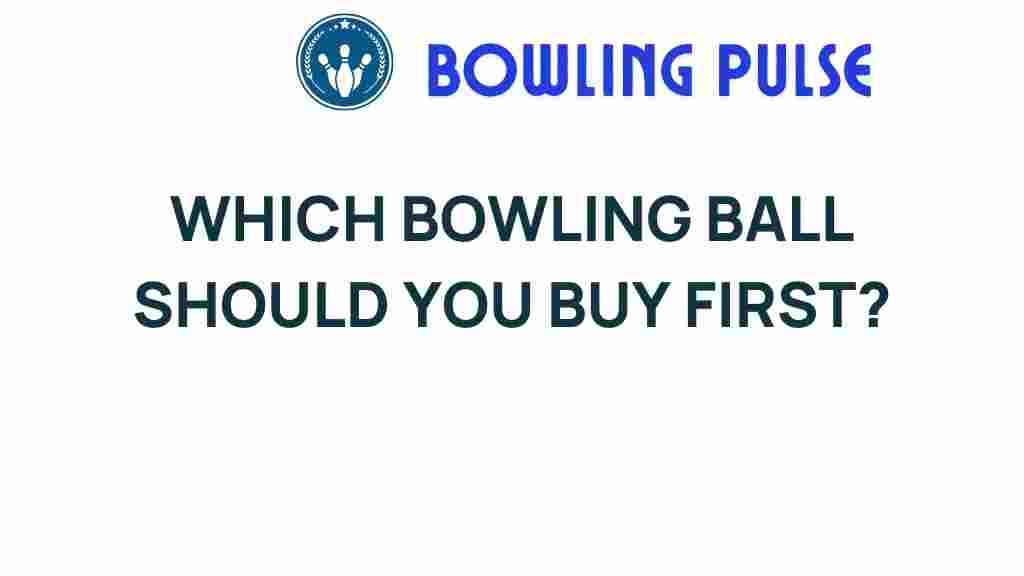The Ultimate Guide to Choosing Your First Bowling Ball
Bowling is a sport enjoyed by millions around the world, offering a unique blend of fun, competition, and skill development. For beginners, selecting the right bowling ball can significantly enhance your experience on the lanes. In this ultimate guide, we will walk you through essential tips and considerations for choosing your first bowling ball, focusing on key aspects like weight, performance, and equipment.
Understanding Bowling Balls
A bowling ball is a heavy spherical object used in the sport of bowling. It is designed to knock down pins arranged in a triangular formation. As a beginner, it’s crucial to understand the different components of a bowling ball and how they affect your performance.
- Coverstock: The outer layer of the ball influences how it interacts with the lane surface.
- Weight Block: The core of the bowling ball; its shape affects the ball’s motion.
- Finger Holes: Customizable holes that allow bowlers to grip and release the ball effectively.
Why Choosing the Right Bowling Ball Matters
Choosing the right bowling ball is essential for several reasons:
- Improved performance: A ball that fits your style helps achieve more strikes and spares.
- Comfort: A well-suited weight and grip reduce the risk of injury.
- Enjoyment: The right ball can make your bowling experience more enjoyable and less frustrating.
Key Factors in Your Bowling Ball Selection
When selecting your first bowling ball, consider the following factors:
1. Weight
The weight of a bowling ball is one of the most critical aspects to consider. Bowling balls typically range from 6 to 16 pounds. As a beginner, you’ll want to choose a weight that feels comfortable and manageable. A good rule of thumb is to select a ball that is about 10% of your body weight, but never exceed 16 pounds.
2. Grip and Finger Holes
Finger holes can be customized to fit your hand, providing a better grip. As a beginner, you might opt for a ball with standard drilled holes. However, as you progress, consider having a ball drilled to fit your hand perfectly. This customization can greatly improve your performance.
3. Coverstock Material
Bowling balls come in various coverstock materials:
- Plastic: Ideal for beginners, offering minimal hook and a straight trajectory.
- Urethane: Provides more hook potential and is great for intermediate bowlers.
- Reactive Resin: Designed for advanced bowlers, these balls offer maximum hook and performance.
4. Bowling Ball Types
There are three primary types of bowling balls:
- Strike Balls: Designed to maximize pin action and produce strikes.
- Spare Balls: Often made of plastic, these balls are used to convert spares.
- All-Around Balls: Versatile options suitable for both strikes and spares.
5. Lane Conditions
Understanding the lane conditions where you’ll be bowling can affect your choice. Different bowling balls perform better on various lane conditions:
- Dry Lanes: Use a ball with a smoother surface.
- Oily Lanes: Opt for a ball with more grip and a reactive coverstock.
Step-by-Step Guide to Selecting Your First Bowling Ball
Now that you understand the key factors, follow this step-by-step guide to choose your first bowling ball:
Step 1: Determine Your Weight
Find a comfortable weight that you can handle without strain. Visit a local bowling alley or pro shop to test different weights. Aim for a ball that you can lift and roll with ease.
Step 2: Choose Your Grip
Examine the finger hole options. If you’re new to bowling, a ball with conventional grip holes will suffice. As you advance, consider getting a ball drilled to your specifications.
Step 3: Select the Coverstock
As a beginner, start with a plastic bowling ball. It’s easier to control and perfect for learning the basics of the game.
Step 4: Decide on the Ball Type
Determine whether you need a strike ball, spare ball, or an all-around ball. As a beginner, an all-around ball is a practical choice.
Step 5: Consider Lane Conditions
Familiarize yourself with the typical lane conditions at your local bowling alley. This knowledge will help you select a ball that performs well in those conditions.
Bowling Ball Maintenance Tips
Once you’ve selected your bowling ball, maintaining it is crucial for optimal performance:
- Regular Cleaning: Use a bowling ball cleaner after every session to remove oil and dirt.
- Resurfacing: Consider resurfacing your ball every few months, especially if you bowl frequently.
- Storage: Store your bowling ball in a cool, dry place to prevent damage.
Troubleshooting Common Issues
As a beginner, you may encounter some common issues with your bowling ball:
1. Lack of Hook
If your ball isn’t hooking as expected:
- Check the coverstock material; a plastic ball may not hook well.
- Ensure you’re using the correct release technique.
2. Inconsistent Performance
If your ball isn’t performing consistently:
- Consider the weight; too heavy can cause fatigue.
- Check the fit of the finger holes; a poor grip can lead to inconsistent releases.
3. Pain or Discomfort
Experiencing pain while bowling?
- Re-evaluate the weight of your ball.
- Consider getting a ball customized to fit your grip better.
Conclusion
Choosing your first bowling ball is an exciting step in your bowling journey. By considering the weight, grip, coverstock, and lane conditions, you can select a ball that enhances your performance and enjoyment of the game. Remember to maintain your equipment properly and troubleshoot any issues that arise as you progress. With the right bowling ball in hand, you’ll be on your way to achieving strikes and spares in no time!
For more tips and resources on bowling, check out our bowling tips page. Additionally, for a deeper understanding of bowling equipment, visit Bowling.com.
This article is in the category Equipment and created by BowlingPulse Team
